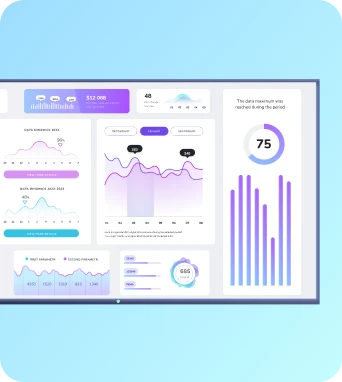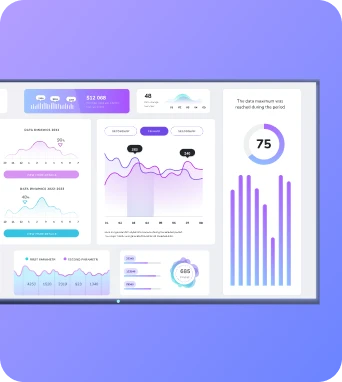AI-optimized layouts
AI-optimized layouts refer to automated layout generation and adaptation for digital signage and dashboards using machine learning. These systems analyse content, screen dimensions and audience signals to select placements, sizes and timing that improve readability and engagement while meeting constraints such as brand rules and playback performance.
What is AI-optimized layouts?
How AI models and heuristics produce layout decisions for signage players and dashboards
AI-optimised layouts combine learned models and deterministic heuristics to produce layout decisions that signage players can execute. At a technical level, a model—often a lightweight convolutional or transformer-based architecture tuned for classification and bounding box prediction—ingests content metadata and low-resolution representations of media and outputs region proposals and priority scores. Those proposals are converted into layout constraints such as minimum pixel size, z-order and safe margins. For example, the model may tag a video thumbnail as high-priority and propose a left-aligned 16:9 region occupying 40 per cent of screen width while reserving a 10 per cent bottom strip for captions; the player then uses that JSON to render elements in real time. To keep inference practical on signage estates, many implementations perform layout generation in the cloud and send compact layout manifests to players, or they export models in ONNX format for edge inference, using quantisation and pruning to reduce latency and memory footprint. Beyond pure ML, rule engines ensure brand compliance and playback robustness. Deterministic rules check for legibility thresholds—such as minimum font sizes based on distance sensors or display DPI—and override model suggestions that would break policy. Integration with scheduling engines means layout decisions can be conditioned on campaign priority and allowed ad zones; an AI-optimised system might offer a A/B configuration where the player reports engagement metrics and the model refines its scoring offline. From an integration standpoint, layouts are exposed via APIs or webhooks so CMS platforms like Fugo.ai can request a layout manifest, cache it, and fall back to template renderings if a player is offline. This hybrid approach—machine-learned proposals constrained by business rules—delivers practical, explainable layout outputs suitable for diverse signage fleets.
Deploying AI-optimised layouts across signage fleets, integrations and monitoring
Implementing AI-optimised layouts in a production signage estate requires planning for orchestration, compatibility and observability. Start by defining the point of layout generation: will layouts be rendered server-side as final frames pushed to players, or will manifests be produced and interpreted by the player software? Each choice affects bandwidth, player requirements and troubleshooting. For cloud-rendering, orchestration should include CDN caching and expiry rules so unchanged layouts are served from edge nodes; for edge-manifest strategies, ensure players run a validated interpreter and provide versioned feature flags for gradual rollouts. A practical step-by-step deployment might begin with a pilot set of screens representing different form factors, followed by automated A/B tests where half of the pilot displays use AI-optimised layouts and the other half use baseline templates. Collect key metrics such as playback success rate, content visibility (via on-screen analytics or external cameras), and CPU/GPU utilisation on players. Common pitfalls include ignoring perceptual legibility—models can propose space-efficient but unreadable text blocks—and underestimating latency in policy checks. To mitigate this, enforce pre-deployment validation that simulates worst-case resolutions and network conditions, and implement graceful degradation where a fallback template is used when a manifest or model inference fails. Monitoring should capture both performance telemetry (playback errors, render times) and outcome metrics (dwell time, interaction events) and expose them through dashboards in the CMS; Fugo.ai customers often integrate these feeds into a central dashboard to correlate layout changes with engagement. Continuous optimisation loops are essential: use periodic retraining driven by logged engagement signals, maintain model explainability records to satisfy stakeholders, and version layout rules so rollbacks are simple. By treating layout generation as a managed service with observability and staged deployment, teams can scale AI-optimised layouts across heterogeneous players and integrations with predictable results.
Final Thoughts on AI-optimized layouts
Keep the learning going...
AI-driven analytics
AI-driven analytics in digital signage applies machine learning, computer vision and statistical inference to automatically collect and interpret viewer behaviour, dwell time and contextual signals from displays and sensors. The processed insights drive content sequencing, audience measurement, dynamic personalisation and automated optimisation across TV dashboards and workplace displays managed by platforms like Fugo.ai.
AI-driven signage tools
AI-driven signage tools are software systems that apply machine learning and algorithmic decision-making to automate content creation, context-aware scheduling and dynamic display logic for digital signage, TV dashboards and workplace screens, improving relevance, engagement and operational efficiency across signage networks.
AI-powered content moderation
AI-powered content moderation for digital signage uses machine learning models to automatically analyse images, video, text and metadata destined for screens, detecting inappropriate, brand-risk or non-compliant material and applying rules to approve, quarantine or transform content before it reaches players and dashboards in real time or batches.



